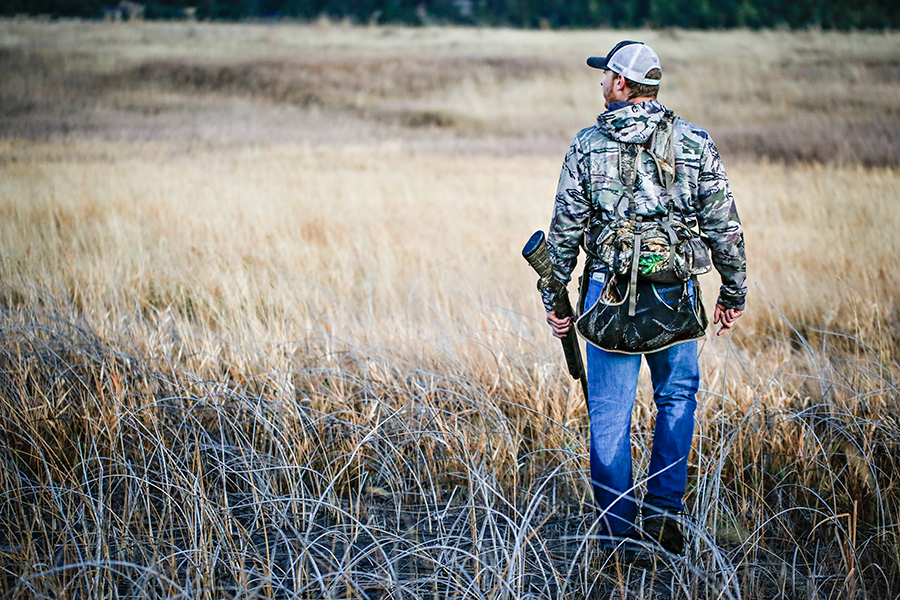Sportsmen Licenses Hit All-time High as Demand Surges for Outdoor Recreation
Montana Fish, Wildlife and Parks anticipates another busy season following last year’s record state park visitation and renewed interest in hunting, fishing
By Tristan Scott
The revelation in February that a Texas couple had purchased 125,800 acres of timberland west of Kalispell elicited an uncharacteristically emotional response from Northwest Montana’s vibrant hunting, fishing and outdoor recreation community, even after the new owners promised to maintain much of the public access that hunters and anglers have come to enjoy over the decades.
Indeed, the new owners, Mark and Robyn Jones, made good on their pledge to renegotiate access agreements with state land managers this spring, enrolling 106,052 acres of their newly acquired parcel, dubbed Flathead Ridge Ranch, into Montana Fish, Wildlife and Parks’ (FWP) block management program, a system that furnishes the public with access to private acreage in exchange for a patrol presence by state game wardens.
The new owners have also issued assurances that they harbor no plans of large-scale commercial development on the property, which they regard as a “family legacy investment” and intend to preserve it for generations. All they’ve asked from the public in return for their allowances is basic land-use etiquette, which has often not been on prominent display on the former corporate timberlands, where bullet-riddled signs and abandoned trash heaps were par for course.
Still, the specter of restricted land access touched a nerve among local sportsmen groups, which is testament to a growing anxiety over preserving a way of life that some view as eroding under pressure from out-of-state interests, and with them a rise in demand for outdoor recreation, including hunting.
Earlier this month, the state released figures detailing license application numbers for the 2021 season, which showed hunters turning out in record numbers, with a 12.5% increase in resident applicants over last year (82,384) and a 29.5% increase (16,650) in nonresident applicants for special deer and elk permits.
The sales of fishing licenses are also on the rise, with 132,130 resident licenses sold as of April 25, a 2.25% increase over 2020; however, with severe travel restrictions in place at this time last year, those sales were significantly down. The increase in demand is most notable in the sales of nonresident fishing licenses, which jumped nearly 60% compared to last year.
The growth in license sales and applicants reflects the value Montanans and visitors alike place on hunting opportunities, as well as the abundant wildlife resource FWP manages, Hank Worsech, the agency’s director, said.
“The people who buy licenses and come here to hunt are important partners in managing and protecting these resources,” Worsech said, noting that funds generated through license sales are used to benefit hunters and anglers. “Without them, we can’t do all the work we do.”
Much of the uptick in license sales is due to resident applications, though Worsech said anyone who’s lived in Montana for a minimum of six months can apply as a resident, meaning that much of the renewed interest is likely due to the state’s population influx.
“I’m sure a lot of the increase we’re seeing are people who have recently come to Montana,” Worsech told the newly appointed members of Montana’s Fish, Wildlife and Parks Commission earlier this month.
Whether the numbers reflect those trying a new outdoor activity for the first time, or someone reigniting a former passion, the renewed popularity doesn’t seem to be ebbing. Instead, natural resource managers are preparing for the trend to continue, while providing more outreach and education on how to responsibly recreate outside.
Although hunters and anglers often tend to be well versed in basic outdoor etiquette and “Leave No Trace” principles, the same can’t be said for the record-breaking crowds frequenting Montana’s state parks.
Last year, Montana State Parks recorded more than 3.4 million visitors, a nearly 30% increase over 2019, while Flathead Lake State Park’s six units registered the highest visitation at 471,690 visits, up nearly 33% from the year before. Tallied together, Northwest Montana’s roster of 13 state parks approached 1 million visitors.
“These record-setting visitation numbers should not come as a surprise to anyone who visited any of our parks in 2020,” Beth Shumate, FWP’s parks division administrator, said. “The increased amount of people outdoors was evident, and our staff went above and beyond the call of duty to keep our parks safe and accessible.”
Sometimes, the call of duty extended to cleaning up improperly disposed of garbage, or removing graffiti. In other cases, visitors left “toilet paper blooms” along trails or other frequented areas. At the same time, Montana’s hotline for reporting fish, wildlife and other recreation violations — 1-800-TIP-MONT — has seen a steady increase in calls and online reporting in recent years, according to FWP enforcement officials.
Reports that resulted in law enforcement action increased from about 3,700 in 2019 to nearly 4,100 in 2020, a jump of nearly 11%. Total reports increased by about one-third, from about 5,100 to 6,800. The category that surged the most included calls related to aquatic invasive species, or AIS, jumping 114% from 270 to 579 in a single year.
Mark Jones, the wealthy Texas businessman who now owns much of the former Weyerhaeuser timberland west of Kalispell, emphasized that while he plans to continue to allow access on much of the property, that access will be contingent on the conduct of public users.
“It is our intention going into this to be good neighbors, but being good neighbors is a two-way street,” Jones said. “We hope that the public who wish to use this land is committed to being good neighbors, too.”